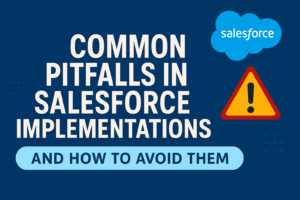BLOG
3 Ways Gen Z Is Changing Higher Ed Strategy
Generation Z is the post-Millennial generation, born from the mid-1990s to the mid 2000s. More than simply ‘savvy’, these budding adults have grown up fully immersed in the world of technology—a world entirely different to their Baby Boomer grandparents and Generation X parents.
But change needn’t be scary. In fact, when approached in the right way, educational institutions have much to gain from engaging their newest cohort on their own terms through effective social media advertising. Here’s what we know matters when building your social media marketing strategy for Generation Z consumers.
Academic leadership in higher education institutions needs to focus on embracing technology and new ways of recruiting, a top-to-bottom personalised experience, and understand that for Generation Z, education is one small piece of the life puzzle.
A Whole-Life Perspective
It’s becoming increasingly clear that young people value success in their life as a whole, more than just solely based on their chosen profession. It means that many are opting to spend their late teens and early 20s ‘enjoying life’ — which often involves travelling and working casually—rather than laying the foundations for their future career, including attending tertiary education.
But that’s not to say that Generation Z is unmotivated. In fact, it’s quite the opposite. By the time they’re 30, Generation Z individuals want to have completed their degree and secured their first job. Some have gone so far as to call them “the most success-oriented generation yet”.
What’s more, the uptake of young people with their sights firmly set on a career of entrepreneurship has skyrocketed. Leadership in higher education may consider offering specialist pathways to cater specifically for these emerging pathways, or shift their traditional commerce and business degrees to accommodate.
Not ones to be tied down to something they don’t enjoy, younger people are increasingly likely to change jobs or even careers. They do it three times as often as job-loyal Baby Boomers. For higher education providers, this puts a whole new spin on the idea of mature-age education, suggesting that a higher education ‘top-up’ every few years to up-skill or move careers could become the new norm.
Far more than just earning money, Generation Z students resonate with organisations and people who share their values, and communicate them well. It means that a well-articulated brand story—one that is shown rather than told through effective social media marketing—is one of the most important assets for any educational provider.
Personalisation Where Possible
Having grown up surrounded by technology that anticipates your preferences and caters for them, it’s only fitting that more and more universities are investigating whether their offerings and social media strategy can be better tailored to the individual. This could involve anything from analysing students’ viewing habits to financial aid and even extracurricular activities, collating the results to build and target content just for them. Gone would be the days of the mind-numbing recorded lecture, in favour of engaging, interactive and personalised content to nurture students at their own pace.
What’s more, with the influence of peers still being considered one of the most important decision-making factors for young people, some institutions are dabbling in peer-to-peer recruiting. Taking the personalised experience to the next level, prospective students are paired with existing or past students with similar interests or pathways. As well as leading on-campus tours, they can also act as a virtual buddy—there to answer questions as needed.
But virtual or not, what’s most valuable about this strategy is the idea of the ‘real’ student. Authenticity is king for Generation Z, and prospective students want to get a taste of the ‘real’ student life through their social media marketing, rather than the smiling faces on the billboards.
Integrated Learning (and Recruitment) Strategies
Technology has already entered the classroom, whether teachers like it or not. Laptops, mobile phones and tablets are an everyday occurrence, and the data suggests that a significant amount of class time is being spent on non-academic distractions. But instead of attempting to ban the inevitable, forward-thinking institutions are finding new ways to connect, through ‘active learning’ mobile apps, two-way video streams that help teachers be everywhere at once, and digital whiteboards. Outside of the traditional classroom, it may take the form of a centralised app with alerts when new videos are posts or when assignments are due. Consider adopting this insight into your social media advertising recruitment funnel as well.
While it may translate to shorter attention spans, a reliance on screens has also taught valuable skills like multitasking. When developing creative for your social media strategy, opt for a several-second consumption time, and remember you’ll likely never have 100% of your viewer’s attention.
It’s not a surprise that most Generation Z individuals seek out video as their preferred method of learning. Combining audio and visual together, and communicating in the least amount of time, means that students can learn efficiently while still having time for their lives outside of study. Adopt video into your social media strategy wherever possible, for both learning and recruitment.
While Millennials are touted as ‘mobile-first’, Generation Z is said to be ‘mobile-only’, choosing to spend over 15 hours a week on these devices, and preferring the mobile-centric social platforms like Snapchat and Instagram. Social media advertising needs to target these popular platforms first.













